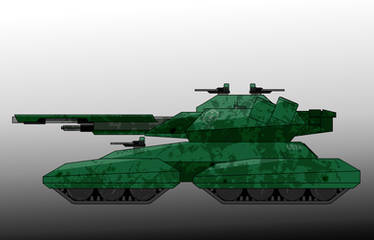Deviation Actions
Description
Be sure to check out Captain Titus Romulus, my original character! jefffletcher.deviantart.com/ar…
For more on the Pre-Marius Roman Legion: jefffletcher.deviantart.com/ar…
Once more, feel free to download and use this diagram for educational purposes!
TRIPLEX ACIES
The standard battlefield formation for almost all field armies up until the First World War is the simple “line of battle” – all forces line up, with footslogging infantry in the center and cavalry on the flanks to attack the enemy flanks, or to screen their own flanks against enemy cavalry. Almost every field battle ever fought followed some variant of this basic principle (though sieges, urban fighting, ambushes, hit-and-run raids, and beach landings are exempt from this rule for obvious reasons).
The Romans in particular developed their own unique take on this, the triplex acies (“triple line”). Actually, they copied it from the Samnite peoples of Italy with whom Rome fought a series deadly wars over the fourth century B.C. (prior, they had used Greek style phalanxes). However, though they didn't invent it, they certainly perfected it, as this was the classic tactic that the Romans famously used against Pyrrhus, Hannibal, and so many others. This was, in effect, the formation that won Rome the Mediterranean!
In short, and as the name suggests, the infantry formed three lines, with the weakest and most inexperienced troops, the hastati, in front; the medium-tier troops, the principes, are placed in the middle; and the hardened veterans, the triarii, are placed at the rear. Each line is further divided into a number of tactical sub-units, called maniples, which move and fight as one coherent and orderly square-shaped formation. A single maniple contains either 120 hastati or principes, or 60 triarii. Most of all, each maniple has a gap between it and the next maniple. To make sure this gap isn’t exploited by the enemy, the rear of the gap is covered by a maniple from the line behind. Thus, the army as a whole resembled a checkerboard, or quincunx.
The practice of leaving gaps in the line served three practical purposes: firstly, the gaps in the line allowed fresh reserves to be brought forward from the rear without disrupting the formations of the frontline maniples.
Secondly, and conversely, the gaps allowed beleaguered forces in the front to fall back to safety behind the next line and regroup. In most other armies like the Greeks, who favored solid frontlines, this meant that the men in the very front could not retreat without disrupting the order of the men behind them, and thus were effectively trapped once the battle had started.
Thirdly, and most importantly, the gaps gave the legion considerable flexibility of movement within the legion. The Greek phalanx, while solid and impenetrable on flat ground, was easily disrupted by obstacles such as rocks, trees, streams, buildings, etc. The Roman maniples, on the other, could use these gaps to maneuver around these same obstacles and quickly reform. In most phalanx-based armies, each man in the formation had a space of about 3-by-3 feet – the men were literally standing shoulder-to-shoulder! The legion, on the other hand, gave each man a space of 5-by-5 feet.
If the battle went well, the triarii would never see action, as all the fighting would have been done by the hastati and principes. However, if things went downhill and the hastati and principes were forced to retreat, it then became the job of the triarii to engage the enemy and hold them off while the hastati and principes fell back behind them to regroup (or fled the battlefield entirely!). Therefore, the Romans had a saying that “it all came down to the triarii” (res ad triarios venit), meaning that something had really gone badly and desperate measures would now have to be taken.
The main success of the triplex acies was that it was a deceptively simple way of moving about vast numbers of soldiers without too much in the way of fancy maneuvers. The practice of keeping most troops in reserve served the Republic well at a time when few other armies in the world did (for example, even Alexander The Great almost never used reserves in any of his battles). In the end, generals like Julius Caesar continued to endorse the "three-lined formation", even after the Marian Reforms did away with the old system of hastati, principes, and triarii and replaced them all with a single, standardized class of legionary.

































![Leman Russ Tank [Warhammer 40,000]](https://images-wixmp-ed30a86b8c4ca887773594c2.wixmp.com/f/fde9d02a-1653-4e9d-8347-88bcee23cba5/dekhpz3-009dd9ac-5df1-414e-a917-251a61700b61.jpg/v1/crop/w_184)
